Story and photos by Jonathan Sharp
Let us make no mistake: the upper end of the classic car hobby has always been for the very wealthy. But at one time there was a discrete middle class who could afford to own the lower end of the upper end, perhaps a Dino 246 GT or a Maserati 3500 or a Lancia Aurelia in good shape. But eventually even the lower end sports cars became ultra-expensive, out of the reach of the normal enthusiast. Those days are gone and probably gone forever. So what is left for the real car enthusiast who has a family, a mortgage and a moderate income?
Between his coverage of Goodwood, Salon Prive and Windsor Castle, Jonathan Sharp took the time to attend a down- to-earth-event at a golf course near Silverstone. Ed.
Hagerty Insurance Festival of the Unexceptional
The driving range of the Whittlebury Park Golf and Country club in Northamptonshire in the UK may not have the glamour of the Pebble Beach Golf course in California, and the view of the grandstands of the nearby Silverstone circuit is not a patch on the view of the Pacific Ocean from the 18th green.
But the cars on display at this year’s Hagerty Insurance Festival of the Unexceptional, now in its third year, are often as rare, if not rarer than those on display on the manicured lawns in California or Windsor Castle for that matter. As to the value of the cars displayed? Probably less than a hotel room for the Monterey car week. So why would you want to fill a field in the middle of England with a selection of Austin Allegros, Cavaliers, Avengers and other such forgettable cars?
Sometimes you go to a classic car event and learn of some daring do involving an old racing hero and a high powered one off race car. Sometimes you just learn that the Daf 66 Marathon coupe was the work of Michelotti.
At one time you could have seen these cars on every housing estate or city street throughout the United Kingdom, but now the remaining examples of these once-common contrivances are often down into single figures. This to my mind makes these survivors of the unexceptional exceptional, and the owners who show them proper old car people.
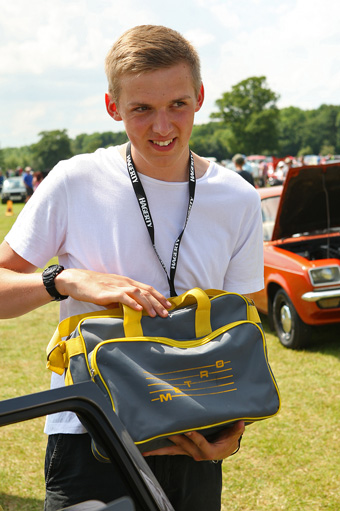 Each of the cars on display had a story which their owners wanted to tell. Often the story would start with their fathers, or grand fathers who bought and drove them. Or as children they had been passengers in the back of the family car for happy trips to the seaside, and they want to relive these memories today. Most of the cars had been given pet names like Donald the Fiat Uno. The owners will spend as much time trying to locate the correct replacement window winder handle for their prized car as would any Ferrari owner.
Each of the cars on display had a story which their owners wanted to tell. Often the story would start with their fathers, or grand fathers who bought and drove them. Or as children they had been passengers in the back of the family car for happy trips to the seaside, and they want to relive these memories today. Most of the cars had been given pet names like Donald the Fiat Uno. The owners will spend as much time trying to locate the correct replacement window winder handle for their prized car as would any Ferrari owner.
The owner of one of the Austin Metros on display was as proud of his matching Metro sports holder as any owner of an Italian exotic car would be of their matching luggage set. They usually join owners clubs, or if there is not one, form one. The one thing I doubt that they do it for is purely as an investment, though as is the case with most things in the old car world today as the numbers surviving decrease the value of those left goes up. Doing a quick internet search I found that cars that I had once bought for £1000 are now changing hands for £10,000, assuming that is that any remain.

Speedy is a Longbridge-built 1960 848cc Austin Mini Seven finished in Speedwell blue. The Mini was launched in 1959 so Speedy was built during the first year of production. Owned by Jason and Tanya Field, Speedy shares space with their nine other Minis.
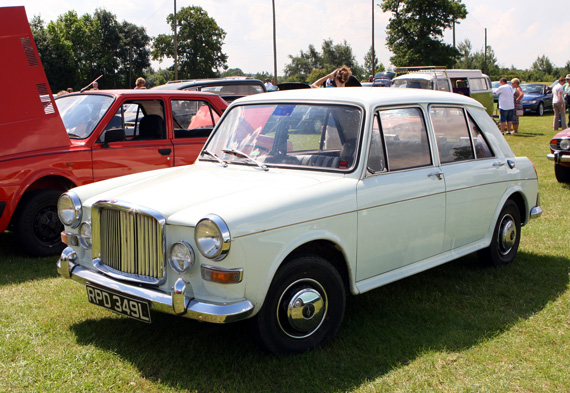
If you wanted your ADO16 to be just that little bit more luxurious than the somewhat spartan standard model you could always order the Vanden Plas example, shown here, with leather seats, wooden(Walnut?) dash panel, Wilton carpets and picnic tables on the rear of the front seats.
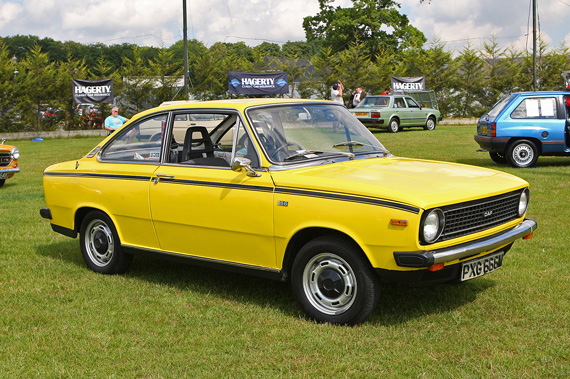
Sometimes you go to a classic car event and learn of some daring do involving an old racing hero and a high powered one off race car. Sometimes you just learn that the Daf 66 Marathon coupe was the work of Michelotti.
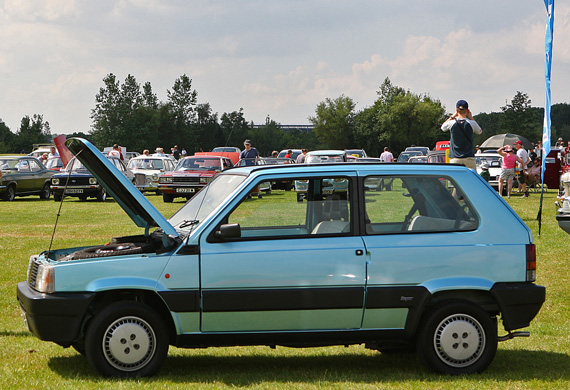
What Fiat does best, small cars with a big heart; a 1989/90 Fiat Panda Super from the pen of Giugiaro and Ital Design.
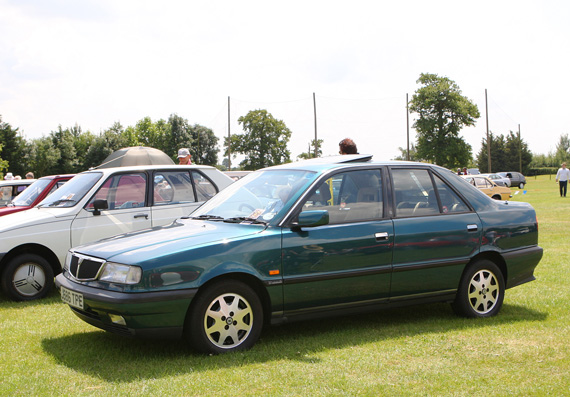
Not very common even when new; a 1991 J reg Lancia Dedra automatic, or as we used to call it “a Deidre”
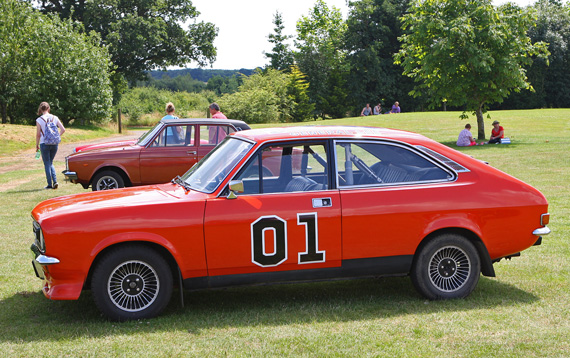
Morris Marina Coupe, “The General Lee” British style. The Dukes of Hazard TV show was a big hit in the UK when first aired but there were not many orange Dodge Chargers in the UK so an orange Morris Marina Coupe would have to do.
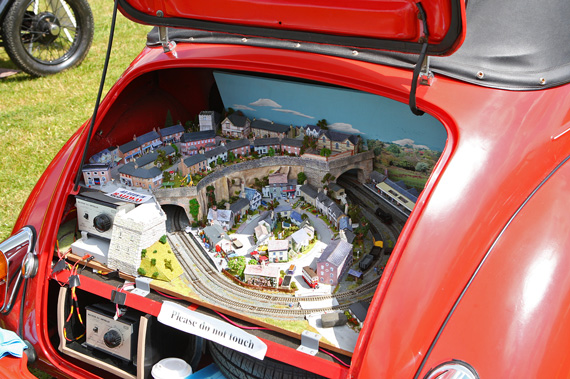
Everybody loves a Morris Minor, especially if it is a convertible and it has a model railway in the boot!
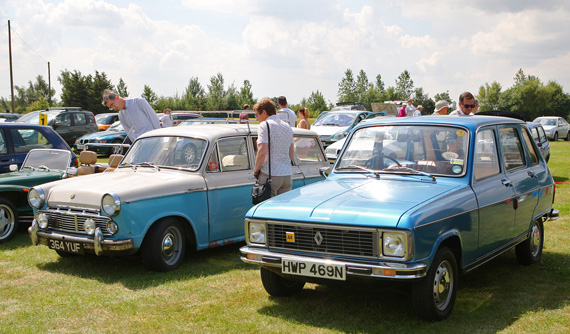
One of only 8 of this model left in the UK, totally original and unrestored, this 1975 Renault 6TL has only covered 30,000 miles from new. Fitted with a passenger vanity mirror and anti dazzle rear view mirror as befitting the posh TL example, she does not however come fitted with radio or cigar lighter. The estate next to her is a very early Datsun Bluebird..
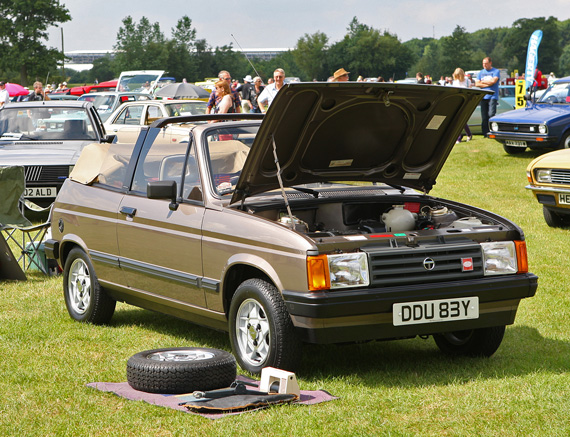
Looking like she has just been driven out of the local Talbot showroom, a 1982/83 Y plate Samba Cabriolet. Designed and built by Pininfarina.
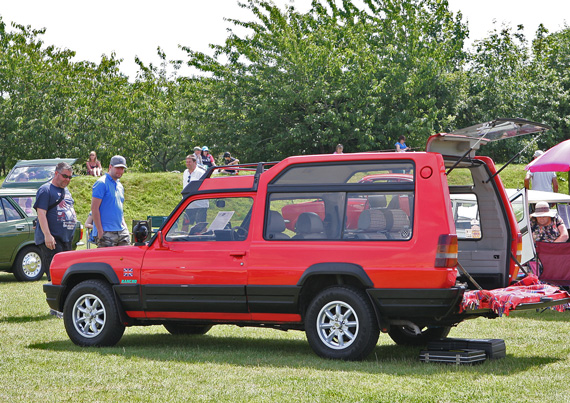
Matra produced 56000 examples of the Rancho but when was the last time you saw one on the road? This example is fitted with the rare raid pack which came with a 1600cc engine rather than the normal 1442cc engine, locking front diff, electric front winch and spare off road wheels.
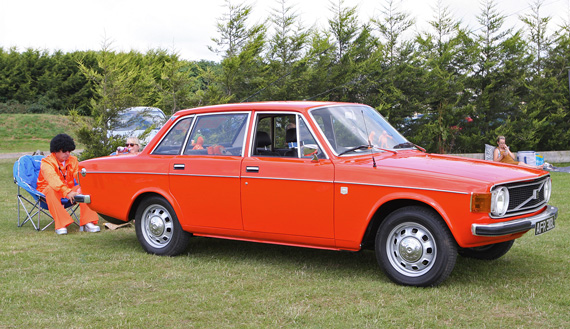
Sometimes we take the hobby of old cars far too seriously. Not so the owner of the bright orange Volvo 144 saloon which no doubt reminds him of a TV ad campaign which ran, I think in the 1980s, for a orange flavored fizzy drink. The gentleman and his wife had both dressed in bright orange to match the car and also the character in the advert. The big note on the rear window said “You know when you have been Tango’d”.
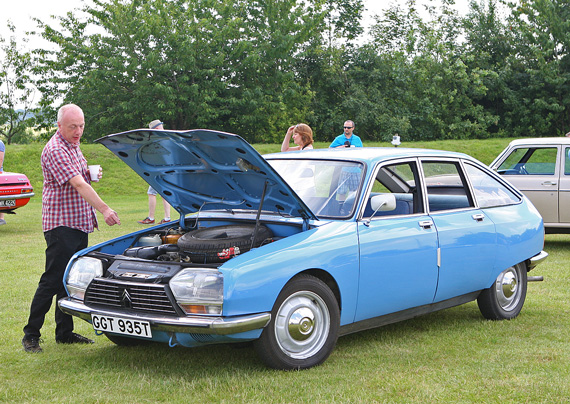
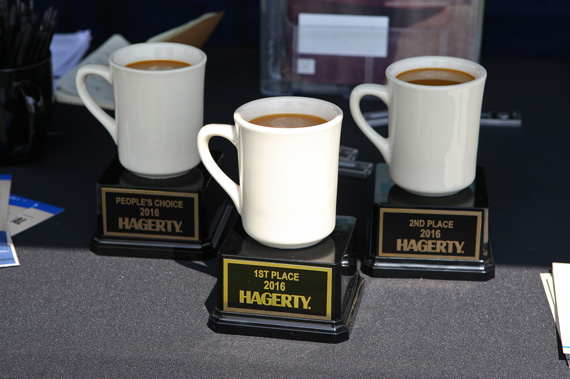
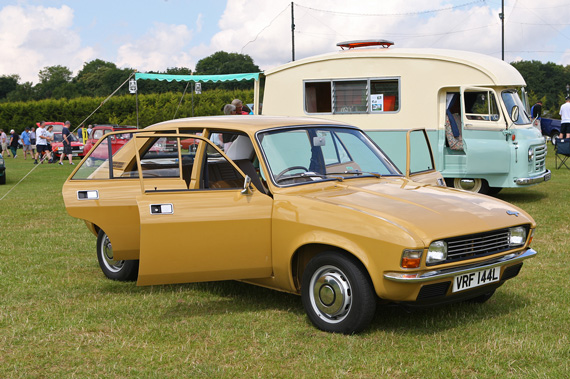
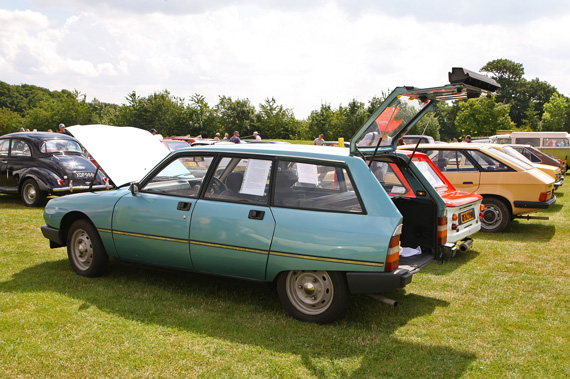
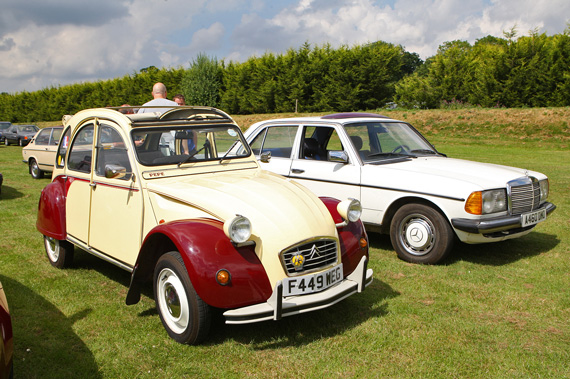
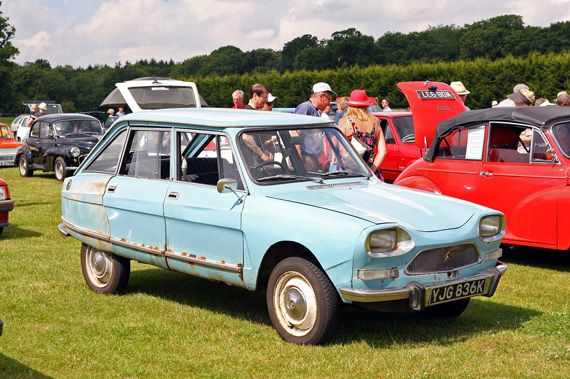
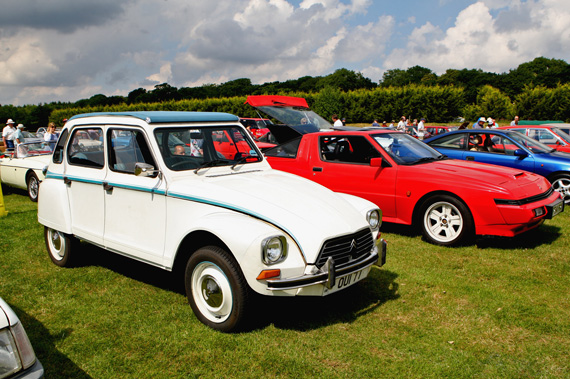
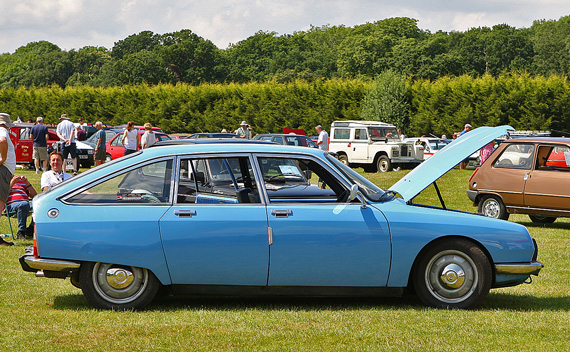
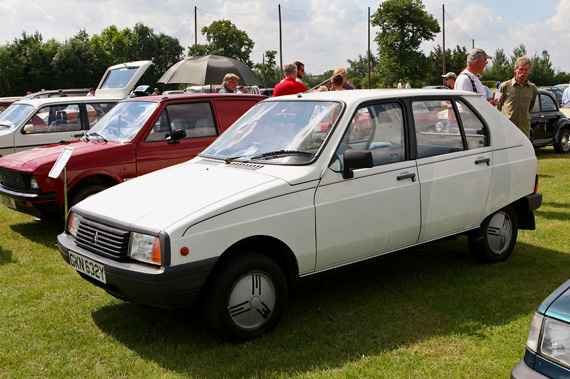
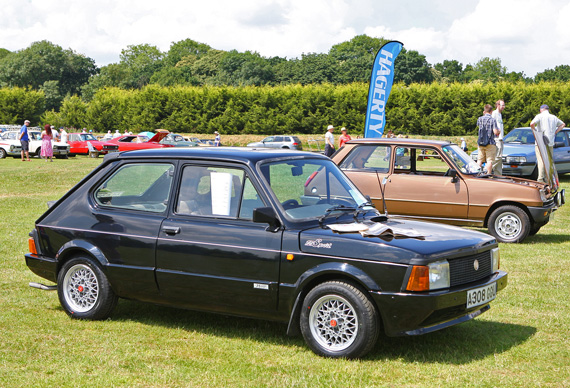
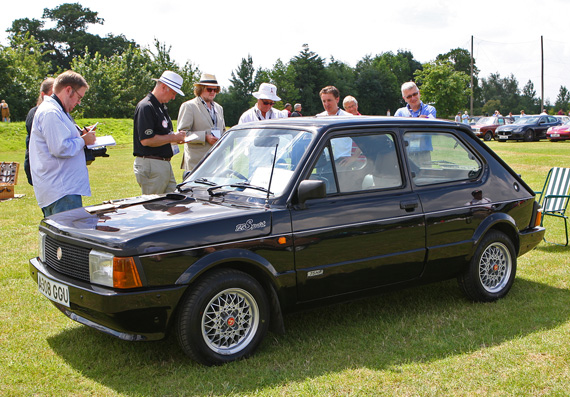
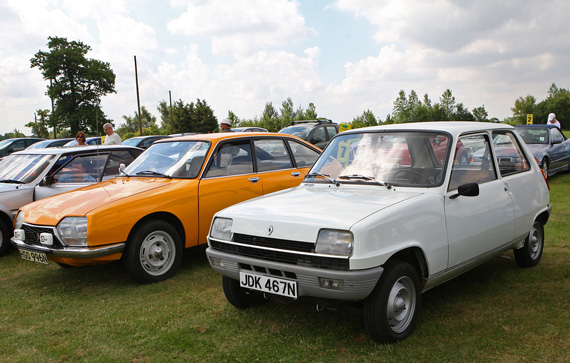
This is a blast from the past. I grew up in the south of France in the seventies and regularly saw those Citroens. Amy 6, Dyane, cut window versions, etc. The village I grew up overlooked Nice on the last streatch of the Alps. The Ranchos were often spotted around.
One thing someone who has never driven a Citroen won’t iunderstand is the dynamics of their cars. I remember driving a GS in Paris and having fun with raisong and lowering the suspensions to see how it effected handling. Friends of mine had special versions of the Visa, which were nicely souped and pumped. We all knew that at the speed we drove and the sharp drops of the roads we love to hug and the poor quality of those cars meant little to no chance of survival in case of a serious accident.
It definitely was another era.
It doesn’t have a radiator silly, thus no clamps.
Some of those cars were quite ordinary and very forgettable however being common in their day and merely used as an appliance by ordinary people basically ensured few would remain however it is interesting to see the mundane of the past as well as the “top end”.
Some of the cars shown however show very clever engineering – I often tell people that you have to be a much more clever engineer/designer to produce a small light car, built to cost constraints that fulfill the end user demands and some of those cars shown raised the bar. They were also fun to drive – it is not just an expensive price tag when new, big horsepower, or speed, or an expensive interior that make a car collectible or in fact enjoyable in my opinion.
Adrian,
This one bowled me over. I decided to write a silly caption for the photo..what could he be pointing too? And the first thing that came to mind was an old argument on what type of hose clamps are correct for a certain year Ferrari. However, I personally never had an experience with the GS, I failed to remember, if I ever knew, that the damn things were air cooled. Do we love our readers or what? Thanks for the catch and I think we’ll leave the mistake in place so that readers can appreciate your comment. Author Jonathan Sharp probably knows better but did not have time to double check my silly captions.
Pete
I hand made duplicate Angst Wire/drum hose clamps for early Ferrari 250 that cost me more time and trouble to fabricate than selling a barrel of Yugo clutch disks. Yes, rare parts are just –well,— rare! No matter their original application, the research to find these unique and esoteric parts is a scavenger hunt often across continents. The resulting “Find”, in no less satisfying, and often a most entertaining story that is as significant as the part itself. The pursuit is as exciting as a car chase scene in a movie, and the serendipitous events encountered are as counter intuitive as a good mystery novel. Barns around the world still have treasures to be discovered, and detectives on the hunt, no matter the make or model.
OK, for the edification of colonial dullards such as myself, might someone please explain the difference between British registrations such as J, K, Y, etc.???
Hi Peter,
It’s, erm, complicated.
British registrations consisted originally of a couple of letters, relating to the town of registration and a group of three or four numbers. Example LG 2245 (LG for Galashiels, 2245 justa s equential number). Could be numbers first, or letters first. After a while the numbers got used up, and they gradually morphed into three letters – two of which remained the town code – and three numbers. 647 EEH (EH for Newcastle in the midlands).
In 1962 a suffix letter (A for ’62) was introduced to extend the available extent of numbers, and to indicate date of registration. SVT 7 B, for example, was a car from Stoke (VT) which was first registered between September ’63 and August ’64.
Some codes were missed out – I and O for example, because of potential confusion with one and zero. Q was used to indicate a bitsa, where the original date of registration couldn’t be established.
In ’73, black plates were abandoned for yellow (rear) or white(front) reflective plates.
Once the sequence was ‘used up’, the letter suffix became a letter prefix, and the whole performance began again.
At the beginning of the noughties a new version was developed to cope with the huge numbers of cars on the road, and the need to split new registration years into two six-monthly periods.
By now you’ll have lost the will to live, but for classic cars all you need to know is that a B-reg means 64, and a D-reg means 66, and so on. Nearly.
Cheers
Will